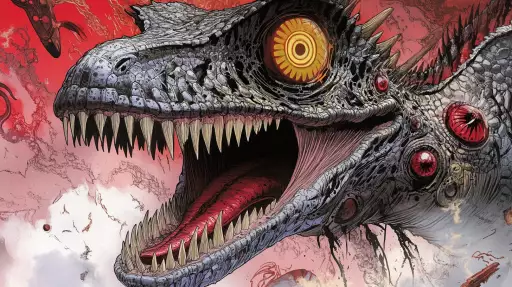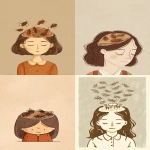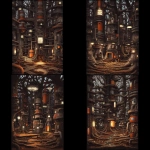Explore the Best AI Image Gallery

The Algorithmic Palette: How AI is Transforming Graphic Design
The world of graphic design is undergoing a seismic shift, driven by the rapid advancements in artificial intelligence (AI). No longer confined to the realm of science fiction, AI is now a tangible force, reshaping how we create, conceptualize, and interact with visual content. From generating stunning visuals to automating tedious tasks, AI is empowering designers to push creative boundaries and unlock new possibilities.
A New Era of Creative Collaboration
One of the most profound impacts of AI in graphic design is its ability to collaborate with human designers. Imagine a scenario where an AI tool can analyze your design brief, understand your aesthetic preferences, and generate multiple design concepts tailored to your specific needs. This not only saves valuable time but also allows designers to focus on higher-level tasks like refining concepts, adding their unique artistic touch, and ensuring the final product aligns with brand identity and target audience.
AI-Powered Design Applications
- Logo and Branding: AI algorithms can analyze trends, color palettes, and typography to generate unique logo designs that capture the essence of a brand.
- Website Design: Imagine an AI tool that can automatically design a responsive website layout based on your content and desired aesthetic. This streamlines the web development process and makes it more accessible to individuals without coding expertise.
- Marketing Materials: From social media graphics to brochures, AI can generate visually compelling marketing materials tailored for different platforms and target audiences.
- Illustration and Character Design: AI-powered tools can create intricate illustrations, characters, and animations, opening up new avenues for storytelling and visual communication.
Navigating the Ethical Landscape
While the potential of AI in graphic design is immense, it also raises important ethical considerations. One key concern is the potential for job displacement. As AI becomes more sophisticated, some tasks currently performed by human designers may be automated. However, its important to note that AI is more likely to augment human creativity rather than replace it entirely.
Another ethical consideration is the issue of bias in AI algorithms. If an AI tool is trained on biased data, it may generate designs that perpetuate existing stereotypes or inequalities. Its crucial for developers and designers to be mindful of these biases and strive to create AI systems that are fair and inclusive.
Looking Ahead: The Future of AI in Design
The future of AI in graphic design is bright, with ongoing advancements poised to further revolutionize the creative industry. Here are some key trends to watch:
- Personalized Design: AI will enable designers to create highly personalized experiences tailored to individual user preferences and needs.
- AI-Driven Creativity: Expect to see AI tools that can generate original artwork, design concepts, and even interactive experiences.
- Seamless Collaboration: The integration of AI into design workflows will facilitate seamless collaboration between human designers and AI systems.
- Ethical Design Practices: As AI becomes more prevalent, the importance of ethical considerations in design will continue to grow.
The convergence of AI and graphic design is ushering in a new era of creative possibilities. By embracing this transformative technology responsibly, we can unlock unprecedented levels of innovation and artistic expression.

](https://images.ai-img.art/thumbnails/150/9f28c14e779f71cc0ed136c81ba752592e674e4a53e1c11a4caa1e07b78c5ebb.webp)











](https://images.ai-img.art/thumbnails/150/555c833d5e6af9ebae7833da7892169a4063d4a38e34e53a69e9689b32d903e9.webp)


](https://images.ai-img.art/thumbnails/150/c20812c5a47846e4869922867e9e6ce19231035e9d902286638bf3b1ec9a02e7.webp)
















](https://images.ai-img.art/thumbnails/150/260ef7952da6f3ccd77a514040e1b6ccc1070906a0b2cd630a49fbf0ac4a0183.webp)


](https://images.ai-img.art/thumbnails/150/0d1e9521e8d86bfaaeb106820b2d47e2944fe387feff7ed4035b10bf82e470e0.webp)
](https://images.ai-img.art/thumbnails/150/8e978c8ce7878ed0d7ef65ec5111e1b144cf3e4815a95e3218d822c9673b5d4d.webp)




](https://images.ai-img.art/thumbnails/150/34848eb84dd2223c18f752f6f91c9a1440eeb60384c4e27004f60ae04515d7f9.webp)






